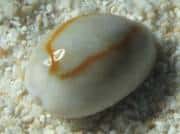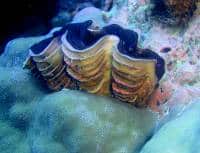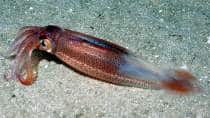Coral Reef Mollusks
Coral reef mollusks are members of a diverse and abundant group of mainly aquatic invertebrate animals (Phylum Mollusca). The vast majority of these animals are benthic (bottom dwelling) invertebrates, but there are a few open water swimmers included as well.
Three main groups (taxa) of mollusks are typically widly distributed throughout coral reef ecosystems:
- Gastropods (snails, chitons, nudibranchs)
- Bivalves (clams, mussels, scallops)
- Cephalopods (squid, cuttlefish, octopus)
Here, we provide a brief introduction to each of these important members of the reef community.



